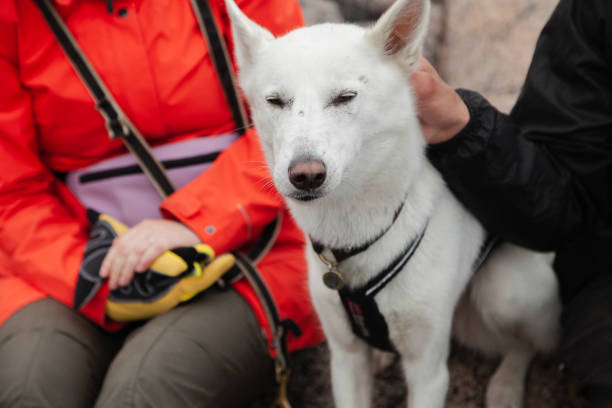Animal rescue organizations play a vital role in the lives of countless animals. They provide shelter, food, medical care, and love to animals in need, often stepping in when local shelters are overburdened or resources are scarce. However, funding is one of the biggest challenges these organizations face. That’s where animal rescue grants come in.
In this guide, we’ll walk you through everything you need to know about securing grants to support your animal rescue initiatives, from understanding the types of grants available to writing successful applications. Plus, we’ll provide helpful tips and strategies for enhancing your chances of getting funded.
By the end of this guide, you’ll have a clearer picture of how to approach grant writing effectively and the resources available to boost your success.
Understanding the Importance of Animal Rescue Grants
Animal rescue grants are essential because they fill funding gaps that many nonprofits struggle to bridge. According to a 2021 survey by The Humane Society of the United States, over 60% of animal rescue organizations reported that funding constraints were their biggest obstacle. These grants not only cover day-to-day expenses like food and shelter but also support long-term projects such as building new facilities, spay/neuter programs, and medical care improvements.
Animal rescue grants are more than just financial aid; they’re a lifeline for organizations trying to make a difference. They provide resources that can transform how an organization operates, allowing it to expand services, save more animals, and ultimately have a larger impact in the community. Let’s explore the various types of grants available, and how each can cater to different needs within the animal rescue ecosystem.
Types of Animal Rescue Grants
Understanding the different types of animal rescue grants will help you determine which ones align with your organization’s goals and needs. Here’s a deeper look into each category:
1. Government Grants
Government grants are often the most substantial in terms of funding. For instance, the U.S. Department of Agriculture (USDA) provides grants for livestock care and management, which sometimes extend to small animal projects. Government grants might cover infrastructure improvements, research into wildlife diseases, or disaster response programs. According to Grants.gov, federal funding opportunities for animal welfare increased by 15% between 2018 and 2020, highlighting the growing emphasis on animal-related projects.
Example: The USDA’s Animal and Plant Health Inspection Service (APHIS) offers grants for initiatives that improve the health and welfare of animals, particularly in rural areas.
2. Private Foundation Grants
Private foundations often prioritize flexibility and innovation. They may focus on specific issues like spay/neuter initiatives, anti-cruelty campaigns, or community outreach programs. Organizations like the ASPCA and Best Friends Animal Society not only provide funding but also offer support in planning and executing projects.
Interesting Fact: The ASPCA donates over $30 million annually in grants to animal welfare organizations across the country, showcasing the significant impact private foundations can have.
3. Corporate Grants
Corporate social responsibility initiatives mean that many large companies look to support animal welfare programs as part of their community engagement. Brands like Petco and Mars Petcare offer grant programs that aim to support pet adoption events, shelter renovations, and educational programs on responsible pet ownership.
Tip: When applying for corporate grants, research the company’s history with animal welfare to align your mission with their corporate values. This alignment can significantly increase your chances of success.
4. Community and Local Grants
Community-level grants might come from local government, community foundations, or even neighborhood fundraising initiatives. These grants might be smaller, but they can be more accessible for grassroots organizations and often have less stringent application processes.
Statistic: According to the National Council of Nonprofits, approximately 40% of animal rescue organizations rely on small local grants and donations to sustain their day-to-day operations.
5. Emergency and Disaster Relief Grants
Natural disasters like hurricanes, floods, or wildfires often leave animals stranded or injured. Emergency grants provide immediate funds to address these crises, including funding for temporary shelters, medical treatments, and rescue operations.
Source: The Humane Society of the United States often coordinates with local agencies and offers emergency grants during disasters. In 2020, their rapid response teams received increased funding by 25% compared to the previous year due to heightened disaster occurrences.
Preparing a Strong Animal Rescue Grant Application
Now that you know the types of grants available, let’s focus on how to prepare a strong animal rescue grant application. Each application should tell a compelling story about your organization, backed by data and realistic plans. Here’s how you can do that:
1. Clear Mission and Vision
Your mission statement is the cornerstone of your application. It should encapsulate your organization’s goals and the impact you intend to create for animals. A strong mission resonates with funders because it reflects passion and dedication. For example:
“Our mission is to save abandoned and abused animals by providing shelter, medical care, and finding loving homes. We believe that every animal deserves a second chance, and through community collaboration, we strive to create a future where animals are safe, cared for, and cherished.”
When writing your mission and vision, use language that evokes empathy and commitment. Funders are more likely to invest in organizations that demonstrate a heartfelt mission and a clear plan for achieving their goals.
2. Specific Project Goals and Objectives
Detailed project goals show that you know exactly what you want to achieve and how funding will help. Break down your objectives into specific, measurable actions. For example, rather than saying “We aim to reduce stray animals,” specify “We aim to rescue 300 stray animals in the next year, provide medical care, and achieve a 75% adoption rate.”
Data Point: A study by the Humane Society shows that clear, measurable objectives in grant proposals increase funding success by up to 20%.
3. Budget and Financial Transparency
A detailed budget demonstrates responsibility and transparency. Break down your budget to include categories such as:
- Medical Expenses: Vaccinations, surgeries, ongoing treatments.
- Shelter and Housing: Rent, utilities, maintenance.
- Food and Supplies: Nutrition, bedding, toys.
- Staff and Volunteers: Training, stipends, support.
- Administrative Costs: Marketing, office supplies, technology.
Providing a realistic and detailed budget builds trust with funders. According to Grant Professionals Association, applications with transparent budgets have a 15% higher chance of success.
4. Demonstrating Need
Showcase the challenges your organization faces. Use statistics to illustrate the scope of the problem:
- “In our community, over 500 stray animals are reported each month, with limited resources available to shelter and care for them.”
- “Due to budget constraints, our organization has turned away 20% of animals in need of urgent medical care.”
Visuals like charts, graphs, and infographics can be incredibly effective here. Visual aids make it easier for funders to understand the scale of the issue and the critical need for funding.
5. Evaluation and Impact Assessment
Funders want to know how you’ll measure the success of your project. Detail your evaluation methods:
- Animal Outcomes: Track how many animals are successfully rehabilitated and adopted.
- Community Impact: Survey local residents on changes in stray animal populations and community safety.
- Financial Reporting: Provide regular updates on how funds are used and project milestones.
Implementing a feedback loop where you share success stories and lessons learned with funders not only demonstrates accountability but also strengthens future applications.
6. Strong Community and Volunteer Engagement
Show that your organization has a robust support network. Highlight:
- Volunteer programs and training sessions.
- Community outreach efforts.
- Partnerships with local businesses, schools, or other nonprofits.
Case study: A local rescue organization that partnered with a school district for an educational program on animal welfare saw a 50% increase in volunteer sign-ups and a 30% increase in donations within a year.
Quote: “Our volunteers are the heartbeat of our organization. Their dedication and passion enable us to reach more animals than we ever thought possible,” says Jane Doe, Director of Community Outreach at Happy Tails Rescue.
In-Depth Look at the Grant Writing Process
Now that we’ve covered the basics, let’s delve deeper into the grant writing process itself. This stage-by-stage breakdown will help you navigate each step with confidence:
Step 1: Research and Identify Potential Grants
Start by researching potential funders that align with your organization’s mission. Use resources like:
- Grant Writing Academy Newsletter: Subscribe to get tailored advice and updates on new grant opportunities.
- Foundation Directory Online: A comprehensive database of foundation grants. Search by keywords like “animal welfare” or “animal rescue.”
- Grants.gov: For federal opportunities, use the advanced search options to filter by category, funding amount, and eligibility.
Pro Tip: Create a spreadsheet to track each grant opportunity, including deadlines, requirements, and contact information. This helps ensure you don’t miss out on deadlines and can organize your applications effectively.
Step 2: Understand the Funder’s Priorities
Each funder has specific interests and priorities. Before crafting your proposal, thoroughly review their website, past projects they’ve supported, and any published guidelines. Tailoring your application to mirror their language and focus can make a big difference.
Example: If a foundation prioritizes “community engagement” and “education on animal welfare,” emphasize how your project involves community outreach and educational components.
Step 3: Develop Your Proposal Outline
Before writing, create an outline to organize your thoughts. Your outline might include:
- Introduction: Briefly introduce your organization and its mission.
- Statement of Need: Explain the problem and why it’s important.
- Project Description: Detail the activities, timeline, and expected outcomes.
- Budget: Present a clear, detailed financial plan.
- Evaluation Plan: Describe how you’ll measure success.
- Sustainability: Outline how your organization plans to continue the project after the grant ends.
Tip: Write in a conversational and friendly tone. Make your proposal engaging, and avoid overly technical jargon. The goal is to make the funder feel connected to your cause.
Step 4: Write the Grant Proposal
With your outline ready, start writing the proposal. Here, attention to detail is crucial. Use headings, subheadings, and bullet points to make the document easy to navigate. Use simple language and avoid overly complex sentences.
Hook Example: “Imagine a world where every stray animal finds a safe home. This dream drives our mission at [Your Organization]. With your support, we can turn this dream into reality, one rescue at a time.”
Step 5: Review and Edit
After writing, take time to review your application:
- Check for clarity and coherence.
- Ensure all required documents and attachments are included.
- Verify that you’ve answered all questions thoroughly.
Consider having a colleague or friend review your proposal. A fresh set of eyes can catch mistakes you may have overlooked and provide valuable feedback on how persuasive your narrative is.
Step 6: Submit the Application and Follow Up
Submit your grant application according to the funder’s guidelines. Ensure you meet deadlines and follow formatting requirements. After submission:
- Send a thank-you note to the funder for considering your application.
- If the funder provides feedback, take it into account for future proposals.
- Politely inquire about the status of your application if you haven’t heard back within their typical review period.
Statistic: According to a report by GrantWatch, follow-up inquiries can improve success rates by 10% because they show your commitment and professionalism.
Real-Life Success Stories
To inspire and illustrate the effectiveness of well-written grant applications, here are a few success stories:
Story 1: Transforming a Community Shelter: A small animal rescue in Ohio struggled with overcrowding and outdated facilities. By securing a $50,000 grant from PetSmart Charities, they renovated their shelter, increased their capacity by 30%, and improved the health outcomes of the animals. Their detailed project plan, clear mission, and strong community support were key factors in winning the grant.
Story 2: Spay/Neuter Initiative: An organization in Texas applied for a federal government grant to implement a spay/neuter program aimed at reducing the stray animal population. With a detailed budget and clear metrics for success, they secured $75,000. Over two years, they spayed or neutered 1,500 animals, resulting in a 20% decrease in stray populations in their target area.
Story 3: Disaster Response Team: After a major hurricane hit Florida, an animal rescue group quickly mobilized to assist stranded animals. With emergency grants from HSUS and local foundations, they provided immediate care, set up temporary shelters, and coordinated adoptions. Their quick response and transparent reporting impressed funders, securing additional funding for future disasters.
Leveraging the Grant Writing Academy Newsletter
One resource stands out for those looking to hone their skills in writing compelling animal rescue grant proposals: the Grant Writing Academy Newsletter. By subscribing to this newsletter, you gain access to:
- Tips and Strategies: Learn how to craft persuasive narratives, build budgets, and tailor your proposals for different funders.
- Templates: Get access to proven templates that can be adapted to your organization’s needs, saving time and ensuring you cover all necessary components.
- Tools: Discover software and online resources that can streamline your research, budget creation, and application tracking.
- Case Studies: Real-world examples of successful grant applications and breakdowns of why they worked.
- Community Support: Connect with other grant writers, share experiences, and get feedback on your drafts.
Additional Resources and Support
a) Expand Your Knowledge
The grant writing field is always evolving. Keep learning and improving your skills to stay competitive.
Recommended Resources:
- Request for Proposal Success: How to Write Proposals That Win: Learn the techniques and strategies to create standout proposals.
- Tech Startup Funding Secrets: Navigating Grants for Maximum Growth: Perfect for those in the tech sector looking to leverage grants for scaling.
- Grant Proposal Guide for Environmental Projects: Tailored for environmental initiatives seeking to secure impactful funding.
- The Ultimate Guide to Federal Grant Applications: Techniques for Success: Master the complexities of federal grants with actionable insights.
Explore More Books Here
b) Invest in Expert Guidance
Want to fast-track your growth and achieve even more success?
Join one of our mentorship programs for tailored advice and support:
Mentorship Programs:
- 3-Month Mentorship: The Foundation Builder: A short-term plan to refine your grant writing skills and win your first (or next) grant.
- 6-Month Mentorship: The Proposal Pro: Dive deeper into strategies, proposal reviews, and funding plans.
- 1-Year Mentorship: The Funding Champion: Build long-term success with comprehensive guidance, unlimited reviews, and exclusive resources.
C) Book a One-on-One Consultation
Sometimes you just need personalized advice to tackle challenges or fine-tune your strategy. Let’s work together to solve your unique grant writing challenges.
Book a Consultation Call Here
Frequently Asked Questions (FAQ)
Q: What makes a grant proposal stand out?
A: A proposal stands out when it clearly communicates the need, has specific, measurable goals, and presents a detailed and realistic budget. Personal stories and community impact also add a compelling touch.
Q: How often should I apply for grants?
A: Consistency is key. Regularly checking grant databases, attending webinars, and subscribing to newsletters can provide a steady stream of opportunities. Set a schedule for research and writing to ensure you’re always prepared for deadlines.
Q: What if my grant application is rejected?
A: Rejection is part of the process. Seek feedback, refine your approach, and try again. Use each experience as a learning opportunity to improve future proposals.
Conclusion
Animal rescue grants can transform how you serve animals in need. By understanding the types of grants available, preparing thorough applications, and continually refining your approach, you can secure the funding necessary to expand your impact. The process might seem daunting at first, but with the right tools, resources, and mindset, you’ll improve your chances of success significantly.
Remember, the journey to securing funding is as important as the funding itself. Each application is a chance to refine your mission, engage with your community, and build a stronger organization. By following these strategies and leveraging resources like the Grant Writing Academy Newsletter, you’ll be well on your way to making a lasting difference in the lives of animals.
Thank you for your dedication to animal welfare. With the right funding and resources, there’s no limit to the impact you can have. And don’t forget—subscribing to our Grant Writing Academy Newsletter can provide you with ongoing tips, templates, and expert guidance to enhance your grant writing success. Subscribe today, and take the next step in empowering your organization and saving more lives.




